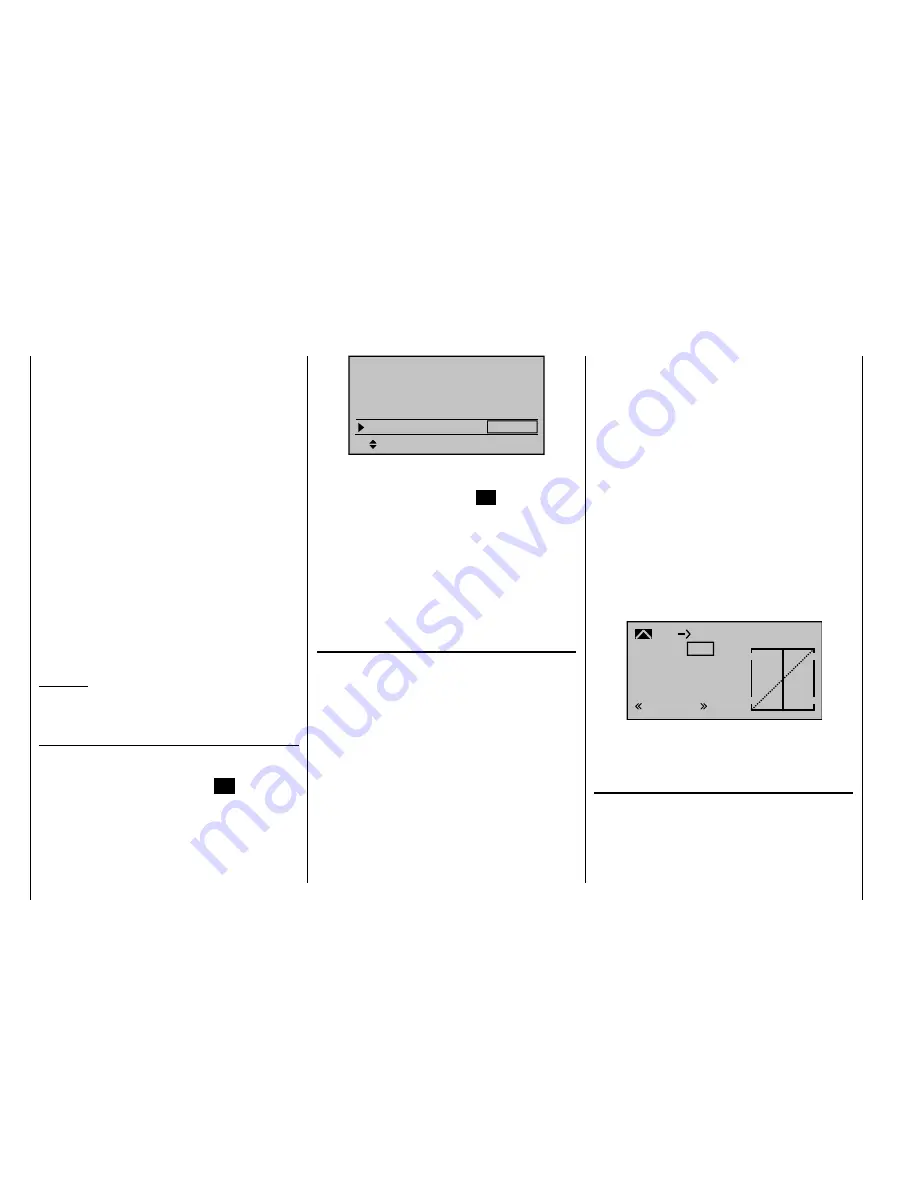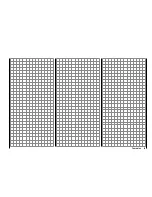
78
Detail program description - Base setup model | Helicopter
SEL
99sec
DSC output
PPM10
RF Range Test
R12
R08
OFF
BASIC SETTINGS, MODEL
Rcv Ch Map
RF transmit
Now you can use the right arrow keys to choose
between three types of modulation "PPM10", "PPM18"
and "PPM24". Pressing the center
SET
button in the
right touch pad again will complete the entry.
This choice primarily infl uences the maximum number
of control channels which can be attached to the DSC
(direct servo control) socket, and thus also available to
a fl ight simulator or teacher/pupil system. This maximum
is control channels 1 ... 5 if "PPM10" is selected, control
channels 1 ... 9 for "PPM18" and control channels 1 ...
12 for "PPM24".
Autorotation
Autorotation is that state of descending fl ight in which
the pitch of main rotor blades are set such that the
rotor's speed matches the natural forces of air fl owing
through, like a windmill. This built-up energy can be
used for "recovery" lift to brake a descent by appropriate
blade pitch adjustment.
Autorotation is a means by which real and model
helicopters are able to land safely in emergency
situations, e. g. in the event of a motor failure. However,
the prerequisite for this is a well-trained pilot familiar
with the helicopter's characteristics. Quick reaction and
good perceptiveness are necessary because the rotor's
inertia can only be used once to generate recovery lift.
When this technique is evaluated during competitions,
the motor must be switched off for autorotation. For
training purposes it is better to keep the motor running
at idle during autorotation.
The Autorotation switch causes a switchover to the
autorotation fl ight phase in which control of "throttle" and
"pitch" are separate and all mixers which have an effect
on the throttle servo are switched off. Corresponding
parameter settings are made in the "
Helicopter mixer
"
menu (see page 178); refer also to the "Principle of the
Auto. C1 Pos." topic which follows.
The "Autorotation" name is permanently assigned to
phase 1 and it is included in the base screen of all
fl ight phase dependent menus. This name can NOT
be changed. It is only possible to assign a switch to
this option, as described on page 52.
If a switch is
assigned, it will have absolute priority over all other
fl ight-phase switches.
Input
Output
Point
?
0%
0%
–100%
C1
Nor mal
Thr
Cur ve off
More about fl ight-phase programming can be found
in the text beginning on page 164 in the
"Helicopter
mixer"
section.
Auto.C1 Pos.
(Autorotation C1 position)
The autorotation fl ight-phase can alternatively be
activated by a threshold point for the C1 throttle/pitch
joystick. To set such a threshold, use the
arrow
keys of the left or right key pad to reach the "Auto.C1
Pos." line.
and the blue LED will again illuminate constantly.
Move away from the model while manipulating
6.
the joysticks during this timespan. If you notice an
interruption anytime while still within a distance of
about 50 m, try to reproduce this malfunction.
If there is a motor in the model, it may be necessary
7.
to switch it on to further check noise immunity.
Continue moving away from the model until perfect
8.
control is no longer possible.
Wait at this distance for the remainder of the test
9.
period with the still-operationally-ready model to
expire. After the range test is ended it should again
respond correctly to all RC controls. If this is not
100 % the case, do not use the system. Contact your
area's
Graupner
GmbH Co. KG service partner.
Perform the range test before each fl ight and, in
10.
doing so, simulate all servo movements which also
take place during fl ight. The range must always be
at 50 m on the ground in order to assure safe model
operation.
Attention:
Never start the range test on the transmitter during
normal operation of the model.
DSC output
If necessary, use the
arrow keys of the left or right
touch pad to reach the "DSC output" line then activate
this menu item by pressing the center
SET
button of the
right touch pad.
Summary of Contents for mx-20 Hott
Page 41: ...41 Your notes...
Page 49: ...49 Your notes...
Page 55: ...55 Your notes...
Page 81: ...81 Your notes...
Page 85: ...85 Your notes...
Page 89: ...89 Your notes...
Page 99: ...99 Detail program description Control adjust...
Page 127: ...127 Detail program description Control adjust...
Page 131: ...131 Detail program description Control adjust...
Page 163: ...163 Detail program description Control adjust...
Page 191: ...191 Detail program description Control adjust...
Page 207: ...207 Detail program description Control adjust...
Page 228: ...228 Detail program description Control adjust...
Page 229: ...229 Detail program description Control adjust...
Page 251: ...251 Detail program description Control adjust...
















































